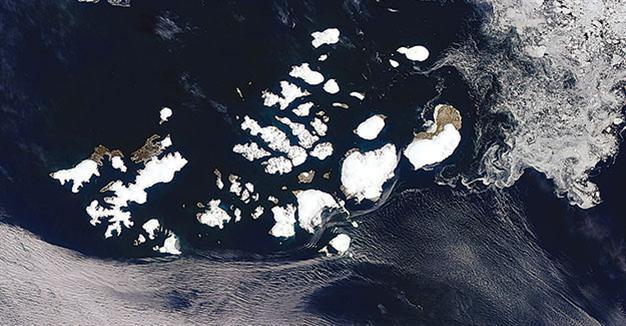2016 breaking records in two climate change indicators
SAN FRANCISCO – Anadolu Agency

This July 13, 2016 iamage captured by the Moderate Resolution Imaging Spectroradiometer(MODIS) on NASA's Aqua satellite shows Franz Josef Land, in the Arctic Ocean. AFP photo
NASA scientists said July 19 that 2016 is already breaking records in two key bellwether markers of climate change: Global surface temperatures and the amount of sea ice in the Arctic Ocean.Each of the first six months of 2016 were record-breaking, with every month from January to June recording the warmest respective temperatures globally since recordkeeping began in 1880.
The period was also the warmest six-month span on record. The average temperature around the world was 1.3 degrees Celsius (2.4 degrees Fahrenheit) warmer than in the late 1800s.
NASA made the discoveries by analyzing ground-based observations and satellite data. While the record high temperatures caused alarm, scientists were mostly disheartened by the fact the data showcased a warming trend that stretched back decades.
“While the El Nino event in the tropical Pacific this winter gave a boost to global temperatures from October [2015] onwards, it is the underlying trend which is producing these record numbers,” said NASA scientist Gavin Schmidt in a statement.
The Arctic Circle is warming faster than the rest of the planet, scientists added. At the peak of the summer melt season this year, the span of sea ice coating the Arctic Ocean was 40 percent less than in the early 1980s.
Arctic sea ice appears to have been decreasing steadily at a rate of 13.4 percent each decade since the late 1970s.
“It has been a record year so far for global temperatures, but the record high temperatures in the Arctic over the past six months have been even more extreme,” according to NASA sea ice researcher Walt Meier.
“This warmth as well as unusual weather patterns has led to the record low sea ice extents so far this year.”
To better understand the trend, NASA also announced that it had started to conduct annual surveys of polar ice meltwater using airplanes. The strategy, called Operation IceBridge, will be the first to measure the depth of these pools of melted polar ice.
















